Day 1 :
Keynote Forum
Randy Richardson
Creighton University School of Medicine, USA
Keynote: Impact of pre-procedural simulation and planning using 3D resin (solid) and photopolymer (flexible) models on interventional cardiac procedures
Time : 10:00-10:40

Biography:
Randy Richardson is the Chairman of radiology at St. Joseph's Hospital and Medical Center and the Associate Dean for Creighton University School of Medicine Phoenix Campus. He is Professor of radiology for the Creighton Schools of Medicine and Adjunct Professor at Arizona State University School of Biological and Health Systems Engineering. He is the author of a textbook, 31 book chapters, 11 syllabi, 44 scientific exhibits, 24 scientific papers, 22 peer reviewed journal articles, 3 websites and 14 multimedia presentations. His area of expertise and research has been in the field of cardiac MRI and CT imaging in children.
Abstract:
Pre-surgical planning using imaging in pediatric congenital and acquired heart disease has played a vital role in patient outcomes for many decades. With advances in 3D printing technology we are now able to take patient specific imaging data and create 3D patient specific physical models. These models can be used to for pre-procedural patient specific simulations of cardiac procedures. We have successfully performed pre-procedure simulated procedures on physical models in a patient with aortic stenosis undergoing per-cutaneous aortic valve placement where the size of the valve was in question, two patients with VSD from myocardial infarction that needed a device closure and to predict compatibility of donors and recipients for heart transplants. In all cases the simulated procedure had a significant impact on the actual procedure resulting in decreased time of procedure compared to standards, influenced the choice of the device chosen and was key in predicting correct sizing of implant. All though the numbers are small the impact seems to be significant.
Keynote Forum
Guy Hugues Fontaine
Université Pierre et Marie Curie, France
Keynote: Irreversible SD in a pediatric PM patient despite immediate CPR: A medico-legal case
Time : 10:40-11:20

Biography:
Guy Fontaine has made 15 original contributions at the inception of cardiac pacemakers in the mid-60s. He has published more than 900 scientific papers including 201 book chapters. He is included in the Profiles in Cardiology (W Hurst 2003) book of the 216 individuals who have made a significant contribution to the study of cardiovascular diseases since the 14th century. He has been included in the book “500 greatest Geniuses of the 21st century” of the American Biographical Institute (ABI 2005). He was the reviewer of 17 journals both in clinical and basic Science. He served during 5 years as a Member of the Editorial Board of Circulation. He has been invited to give 11 master lectures of 90 minutes each during three weeks in the top universities of China (2014).
Abstract:
A 5 years old child died suddenly beside his father watching television. The immediate appeal of the EMS and Fire Brigade did not allow resuscitation practiced under ideal conditions. The child has a bipolar, epicardial, dual-chamber PM, for Complete AV Block detected in utero. A fracture led to unipolarized atrial lead system because a fracture was discovered during follow-up. However, another lead fracture was also visible at the bifurcation of the ventricular lead system. Nevertheless pacing of both atrial and ventricular chambers was OK. LVEF was borderline lower limit can be explained by abnormal area of contraction near the LV apex. The case is still in Court after failure of two conciliation committees. Two university hospitals, eight lawyers with one PM technician, 17 doctors and cardiologists, four experts including two super-experts (including GF) were involved. Up to now this case has been presented to 25 doctors and cardiologists who have not found the solution. Seven half-days to study a 500-pages file were necessary to completely elucidate the mechanism of this irreversible death. The conclusion which needs knowledge in Medicine, Cardiology, PM technology and heart Pathology (despite absence of autopsy) suffers no alternative. The case will be presented step by step asking participation of the audience. The first document is the last standard ECG recorded before the catastrophe; the second are laboratory data concerning an asymptomatic lupus detected in the mother by specific antibodies which may explain AV block. The third is the standard X-Ray showing the two leads fracture. The last is the post-mortem interrogation of PM memories. Analysis and interconnection of all these elements have led a final diagnosis explaining the catastrophe which has no alternative. Up to now no correct solution has been proposed by 212 Drs and cardiologists who attended the presentation of this case.
Keynote Forum
Krzysztof Piotrowski
Pomeranian Medical University, Poland
Keynote: The genetic aspect of human heart development in aspect of prenatal diagnosis
Time : 11:40-12:20

Biography:
Krzysztof Piotrowski, a specialist In Obstetrics, Gynecology and Clinical genetics, completed his PhD with a dissertation on fetal echocardiography. Putting his knowledge into practice, he performs about 3,000 USG investigations of gravidas annually for prenatal diagnosis. He has published many scientific papers and chapters covering prenatal diagnosis. Having introduced the BACs-on-BEADs TM technology to Polish diagnostics, at present he is focused on applying molecular genetics prenatally. For the last nine years he was the Manager of Cytogenetic Unit for Pomeranian Medical University, Szczecin, Poland. Lately, he has founded a new independent genetic centre, DIAGEN – PREDIAG.
Abstract:
Congenital heart diseases are the most common malformations both as an isolated form and as part of genetic syndromes. Extraordinarily fast development of molecular genetics confirms that almost all CHD are genetically dependent in terms of micro-aberrations in different regions of a chromosome or single gene mutations. On the other hand, CHD are an important component of diverse genetic diseases, including monogenic, metabolic and mitochondrial disorders, most often as secondary cardiomyopathies. The genes participating therein are located nearly on each chromosome, mainly on pathways, along with ligand genes and co-factors, transcription factors or individually. Many mechanisms on heart development are based on the balance between apoptosis, proliferation and migration. Crucial genes controlling fetal development, including the creation of heart tube and the forming of left and right ventricular outflow are primary “homeobox” genes grouped in 4 clusters HOX1-4. Other genes condition the forming of different structures. Moreover, in numerous functional disorders, for example the arrhythmia or block, the reason is also genetic, namely the mutation of ion- channel gene placed in 6 chromosomes. Many genes of cardio-genesis were identified, thanks to the investigation of other genetic disorders, for example PTPN11 gene in Noonan syndrome. The gene is also responsible for the development of pulmonary valves or TBX5 gene in Holt-Oram Syndrome. Heart development is also affected by the imprinting (about 30 genes) and the inactivation of the X chromosome in day 21 stage of embryo. We propose that a practical classification could refer to specific CHD characteristic of particular disorders, which might prove helpful in daily practice, because in prenatal diagnosis CHD is often the sole syndrome confirmed by USG scan, which may depend on truly isolated nature or non-specific mild ultrasound co-markers.
Keynote Forum
Anthony C. Chang
Stanford University School of Medicine, USA
Keynote: Use of artificial intelligence in Pediatric Cardiology
Time : 10:00-10:35

Biography:
Anthony Chang, MD, MBA, MPH, is a pediatric cardiologist and Chief Intelligence and Innovation Officer at CHOC Children’s Orange County. He is currently getting his Masters in Bioinformatics/Artificial Intelligence at Stanford, and he is the founder and medical director of the nascent Medical Intelligence and Innovation Institute (MI3) that is supported by the Sharon Disney Lund Foundation. The institute is dedicated to implement data science and artificial intelligence in medicine and is the first institute of its kind in a hospital.
Abstract:
Artificial intelligence and specifically deep learning can be used to change many aspects of pediatric cardiology. First, interpretation of diagnostic methodologies such as echocardiograms and MRI images can be improved with machine learning and eventual interpretation of these studies without humans is possible. The many strategies for therapeutic intervention is well suited for deep learning and can be used to improve quality of decision making for the future as well. The field of pediatric cardiology with its complicated diagnostic and therapeutic challenges is ideally suited for all that artificial intelligence has to offer.
- Advances in Cardiac Operation | Cardiac Critical Care | Clinical Pediatric Cardiology | Neonatal Care Therapies | Diagnostic Techniques
Location: Rivieria
Chair
Amir A Sepehri
CAPIS, Belgium
Co-Chair
Andreas Petropoulos
Azerbaijan State Medical University, Azerbaijan
Session Introduction
Guy Hugues Fontaine
Universite Pierre et Marie Curie, Paris
Title: Epsilon Wave on Insertable Loop Recorder in ARVD suspected by repeated Myocarditis
Time : 10:00-10:30
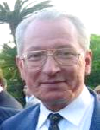
Biography:
Guy Fontaine has made 15 original contributions at the inception of cardiac pacemakers in the mid-60s. He has published more than 900 scientific papers including 201 book chapters. He is included in the Profiles in Cardiology (W Hurst 2003) book of the 216 individuals who have made a significant contribution to the study of cardiovascular diseases since the 14th century. He has been included in the book “500 greatest Geniuses of the 21st century” of the American Biographical Institute (ABI 2005). He was the reviewer of 17 journals both in clinical and basic Science. He served during 5 years as a Member of the Editorial Board of Circulation. He has been invited to give 11 master lectures of 90 minutes each during three weeks in the top universities of China (2014).
Abstract:
A 20-year-old boy had repeated episodes of precordial chest pain and palpitations. The troponin T increased to 0.8µg/l (normal <0.6µg/l) suggesting an episode of acute myocarditis. ECG and echocardiography remained within normal limits. Two years later, he had another episode of chest pain. His troponin was 2 µg/l. Negative T waves in V1 - V5. LVEF dropped to 55% with signs of anteroseptal and apical hypokinesia. CMR showed late enhancement in the sub-epicardial and mediomural layers. Two years later, he experienced a new episode with a near syncopal episode during soccer game. Negative T waves in leads V1 and in V2. Signal Averaging ECG was positive for both 25 and 40 Hz. His troponin T (HS) was 487ng/l (normal<50ng/l) suggesting a severe episode of myocarditis. Contrast angiography confirmed the diagnosis of ARVD. He was positive for PKP2. Electro Physiological Study induced VT only after isoproterenol administration. An AICD was recommended but was refused despite the finding from an insertable loop recorder that showed three spontaneous asymptomatic short lasting episodes of VT up to 260bpm. The loop recorder showed also before the start and after the end of VT a clear fragmented potential of small amplitude (approximately 30 microvolts) immediately following the ventricular Electro Grams (EGM) complex of 0.4mv. This is the first case in whoman Epsilon wave not visible on surface ECG is reported with an insertable loop recorder located under the skin in close proximity to the RV.It is also the first confirmation of ARVD detected after repeated episodes of myocarditis (Lopez-Ayala HR 2015).
Sonia El Saiedi
Cairo University, Egypt.
Title: Tissue doppler derived Left ventricular global diastolic and regional systolic function in children with dilated cardiomyopathy
Time : 10:30-11:00

Biography:
Sonia El-Saiedi Graduated from Medical School, Cairo University in 1987. She was trained in Boston Children Hospital in 1998. Currently, she is working as Professor of Pediatric Cardiology in Cairo University Children Hospital, Egypt as well as she is the Director of Pediatric Cardiac ICU and Cardiomyopathy Clinic.
Abstract:
Background: Hypertrophic cardiomyopathy (HCM) is an important cause of disability and death in patients of all ages. Egyptian children may differ from Western and Asian patients in the pattern of hypertrophy distribution, clinical manifestations and risk factors.
Objectives: The present work aimed to register the clinical characteristics and outcomes of our children with HCM over a period of 7 years and to determine whether reported adult risk factors for SCD are predictive of outcome in these affected children.
Study design & Methods: A retrospective study that reviewed the clinical data of 128 HCM pediatric patients. These data included personal and family history, physical examination, baseline laboratory measurements, ECG, Holter and echocardiographic results. Logistic regression analysis was done for detection of risk factor of death.
Results: Fifty-one out of 128 patients died during the period of the study. Extreme LVH (interventricular septal wall (IVS) thickness or posterior wall (PW) thickness Z score>6, presence of sinus tachycardia and supraventricular tachycardia (SVT) were independent risk factors for prediction of death in patients of HCM.
Conclusions: In our Egyptian tertiary care center, HCM has a relatively worse prognosis. Infants have a worse outcome than children presenting after the age of one year. A poorer prognosis in HCM is predicted by extreme LVH, presence of sinus tachycardia and SVT.
Sonia Shahid
Abbasi Shaheed Hospital, Pakistan
Title: Neonatal and pediatric otology [NaP otology study]
Time : 11:20-11:50

Biography:
Sonia Shahid is a final year MBBS student of Karachi Medical and Dental College, Karachi Pakistan. She has been a part of several national and international researches and many are ongoing. She has attended several national and international seminars and conferences. She is an inquisitive student with a passion for education as a power for change and improvement in the healthcare field of her country and is very ambitious in pursuing her career.
Abstract:
Objectives: To determine the frequency of pediatric patients visiting Pediatric out-patient department with ear-related illnesses in a tertiary care hospital of Karachi, Pakistan.
Aims: The aim of the study was to specify the burden of ear infections in the pediatric population.
Introduction: Ear diseases in children can have consequences if not treated promptly, and can result in high morbidity, hearing disabilities and even mortality. Diagnosing such conditions untimely, and treating them effectively, can reduce the undesired outcomes. According to World Health Organization, approximately 278 million people in developing countries, like Pakistan, suffered from moderate to profound hearing impairment. Out of which, 25% had hearing impairment since childhood.
Methodology: This cross-sectional study was conducted from January 2015-December 2015. Pediatric patients under 7 years of age were recruited in this study. A history and examination form designed particularly for the study was filled by concerned doctor.
Inclusion criteria: Pediatric patients of age ≤7 years regardless of gender presenting to pediatric clinic with principal complain of otalgia, discharge from ear, decreased hearing, pulling in the ear, tinnitus, itching, aural blockage, localized symptoms in and/or around ear (swelling, redness) associated with vertigo and perforation.
Exclusion criteria: Patients having systemic illnesses like autoimmune disorders, metabolic syndromes, congenital hearing defect and neoplastic disorders of ear and immunocompromised patients.
Results: Most of the patients presented with complaints of Earache 59%, hearing impairment 57% and aural blockage or heaviness 34%. Other symptoms were itching 27%, discharge 22%, tinnitus 1% and vertigo1%. Many of the patients presented with multiple and bilateral symptoms except for tinnitus, which was unilateral. Majority of patients had impacted wax 34% and otomycosis 26%. Other conditions were furunculosis 4%, foreign body 3%, acute Otitis media 4%, traumatic tympanic membrane perforation 3%, Otitis media with effusion 3% and chronic suppurative Otitis media 1%.
Conclusion: Infections in growing age can cause permanent hearing impairment. Hearing loss may impact the academic performance of the children. Thus addressing the incidence and prevalence of otological infections in pediatric patients is a matter of great concern.
Fizza Hassan
Abbasi Shaheed Hospital, Pakistan
Title: Awareness of Antibiotic Stewardship Program amongst Doctors of Pediatric Unit (ADAPT study)
Time : 11:50-12:20

Biography:
Dr Fizza Hassan is a Final Year MBBS Student at Karachi Medical and Dental College, affiliated with Karachi University. She has been a keen researcher since High School and took part in many scientific Projects at city level. She has attended several national and international workshops and conferences. She has taken part in many researches, which have been successfully published in international journals and many are ongoing. She is looking forward to a bright future in medical career.
Abstract:
Objective: To study the awareness about Antibiotic Stewardship Program (ASP) in doctors of pediatric unit of tertiary care hospitals of Karachi, Pakistan
Introduction: Inappropriate antimicrobial prescribing is common and is a key factor in the increase of rates of drug resistance, which causes a significant public health burden in terms of morbidity, mortality, and cost. Antimicrobial stewardship programs (ASP) is designed to optimize antimicrobial prescribing, to lower costs, to prevent medication errors, to improve therapeutic outcomes, and to prevent the development of antimicrobial resistance. Given increasing trends in antimicrobial resistance and the resulting limited treatment options, the treatment of hospital-acquired infections poses a significant challenge to healthcare providers. Optimization and conservation of current antimicrobials are necessary.
Aims: The aim of the study is to measure the knowledge of Antibiotic Stewardship Program (ASP) amongst doctors of tertiary care hospital. By doing this we can know that how many and how frequent awareness programs regarding ASP should be conducted in our tertiary care hospital.
Methodology: This cross-sectional study is based on questionnaire which was filled by doctors of pediatric units of tertiary care hospitals. Awareness amongst doctors was determined by this questionnaire. Inclusion criteria: Doctors registered by Pakistan Medical and Dental College working in Pediatric unit. Exclusion criteria: Doctors who were conducting the study were excluded. Doctors practicing in local clinics or Primary healthcare centers were not made the part of study.
Results: A total of 257 doctors were recruited in this study. Out of these Head of departments were 3.11% (n=8), Consultant, 10.89% (n=28), Senior Registrar 24.9% (n=64), Post-graduate trainees 38.13% (n=98), and Registered medical officers 22.95% (n=59). The percentage of awareness amongst doctors of Pediatric units was 85.21% (n=38), of which only 47.36% (n=18) had complete information regarding Antibiotic Stewardship Program. All the doctors enrolled in the study were willing to gain awareness of this program. 5.83% of the doctors had opinion that awareness program only might not help, a strict check and balance has to be kept on pharmacies and drug suppliers when issuing antibiotics whereas the rest 94.17% strongly agreed that awareness in doctors will be helpful in reduction in overuse and unnecessary prescription of antimicrobial agents.
Conclusion: The successful implementation of antimicrobial stewardship strategies will have a significant impact on reducing targeted and non-targeted antimicrobial use, improving quality of care of hospitalized children and preventing emergence of resistance, thus, reducing morbidity and mortality in young patients.
Christine Eloise B. Pascua
University of the East Ramon Magsaysay Memorial Medical Center, Philippines
Title: Prevalence and associated factors of cardiovascular risk among adolescents in Jacobo Z Gonzales Memorial National High School
Time : 12:20-12:50

Biography:
Christine Eloise B Pascua is currently a 3rd year medical student at the University of the East Ramon Magsaysay Memorial Medical Center, Inc. (UERMMCI). She graduated with a Bachelor of Science in Health Sciences at the Ateneo de Manila University (AdMU) with an award-winning thesis entitled “AsTig (Asensong Tubig): A Quasi-experimental Study of Point Source Chlorination, Cloth Filtration and Adsorption by Activated Carbon to Treat Pump Water”. She will finish her Doctor of Medicine in May 2017.
Abstract:
Cardiovascular disease (CVD) is one of the leading causes of serious illness and death worldwide. Screening for the risk factors of CVD (i.e. hypertension, hyperglycemia, hypercholesteremia and obesity) allows for early prevention and decreased risk of the development of CVD. We looked at the prevalence of these risk factors among adolescents at Jacobo Z. Memorial National High School Laguna, Philippines. An analytical cross-sectional design was done using a convenience sampling of 303 adolescents aged 12-17 in Jacobo Z. Gonzales Memorial National High School. The information on dependent and independent variables were determined through questionnaires, actual measurements and blood chemistry analysis. Data was analyzed using State SE to determine the Odds Ratio for each group. The groups were divided based on diet, physical activity, familial history of disease and smoking status. The prevalence of hypertension, hyperglycemia, hypercholesterolemia, central obesity, and obesity was 36.33%, 48.51%, 38.94%, 35.31%, and 7.61%, respectively. Attributes related to hypertension included a family history of diabetes. Those related to hyperglycemia were passive smoking and a family history of heart disease. Attributes related to hypercholesterolemia were sodium consumption above the daily allowable limit. There are certain variables that increase the odds of developing different risk factors. Family history of heart disease, being a passive-smoker and low physical activity increases the odds of having hyperglycemia. Sodium consumption above allowable daily intake increases the odds of having hypercholesterolemia. Family history of diabetes mellitus is associated with increased odds of developing hypertension.
Tanyi Samuel Tanyi
Federal University Dutsinma, Nigeria
Title: Antibacterial and oral acute toxicity studies of Euphorbia hirta
Time : 12:50-13:20

Biography:
Tanyi Samuel Tanyi has completed his BSc and MSc from Usmanu Danfodio University Sokoto, sokoto state, Nigeria. He is currently an Assistant Lecturer at Federal University Dutsinma, Dutsinma, Katsina state, Nigeria at the Department of Biological Science. He is involved in teaching and research in Microbiology at the University.
Abstract:
Due to high cost, undesirable side effects of conventional antibiotics and emergence of multi-drug resistant bacteria, there is a need to search for novel antibacterial agents from medicinal plants. In this study, clinical isolates of Staphylococcus spp, Salmonella spp, Shigella spp. and Escherichia coli were obtained from Usmanu Danfodio University Teaching Hospital Sokoto, Nigeria. The isolates were tested for susceptibility to crude leave extracts of E. hirta by agar diffusion methods. Minimum inhibitory concentration (MIC) of the extract was determined by broth dilution method. The results showed that the most susceptible bacterium to the extract was Shigella, with a zone of inhibition of 23.33 mm, while the most resistant bacterium was E. coli, with a zone of inhibition of 9.43 mm. MIC and MBC of the extract against Shigella was 21.87 mg/ml respectively. Alkaloids, saponsins, flavonoids, anthraquinones, tannins and polysterols were revealed in the extract by phytochemical analysis. Oral acute toxicity of the extract showed no mortality in Sprague Dawley rats at concentration of 50, 300, 2000 and 5000 mg/kg body weight. Result showed that the LD50 was>5000 mg/kg. The MBC: MIC ration>4, suggesting the crude extract was bactericidal. This study showed that leaves of E. hirta can serve as a potential antibacterial agent.
Abdelwahab TH Elidrissy
University of Science and Technology, Sudan
Title: Hypocalcemic Rachitic Cardiomyopathy in Infants

Biography:
In Uk I got my DCH and MRCP (UK) in 1976. After 8 years in Riyadh, Saudi Arabia I became professor of pediatrics. I was head Department of Pediatrics for two terms, then I established pediatric nephrology at KKUH the first caring for chronic renal failure in children by CAPD. From this center was a record publication of 26 children treated in Riyadh I was requested to be Dean of a new medical college in Sudan by PBL system. After spending 10 years in Medina Now I am teaching and spending most of my time in publications as a professor of Pediatrics in the college of Medicine, University of Science and Technology in Omdurman across the Nile from Khartoum.
Abstract:
Hypocalcemic cardiomyopathy in infants is characterized by heart failure in a previously normal infant with hypocalcemia without organic cardiac lesion. Vitamin D deficiency rickets is increasing in Middle East. In a six month study 136 cases of rickets were diagnosed in the main Children's Hospital in Almadinah but none of them showed evidence of cardiomyopathyexcept a case presnted in this meeting. Concerned of missing this serious complication of rickets we searched pub med and present this review article. 61 cases of hypocalcemic cardiomyopathy were reported as case reports with two series of 16 and 15 cases from London and Delhi, respectively. The major features of these cases: the age ranged from one month to 15 months with a mean age of 5 months. All presented with heart failure and hypocalcemia. There was a minor feature of rickets in a few of the cases. All had high alkaline phosphatase. Echocardiology evidence of cardiomyopathy was found in all. Most of them responded to calcium, vitamin D and cardiotonic and diuretics. We concentrated on pathogenesis of this hypocalcemic cardiomyopathy and reviewed the literature. The evidence available supports that the most likely cause of cardiomyopathy is hypocalcemia. Hypovitamin D also contributes but hyperparathyroidism might have a protective role as we did not detect any evidence of cardiomyopathy with hyperparathyroidism per sey and florid features of rickets. We need to look out for cardiomyopathy among infants with hypocalcemia. For prevention maternal supplementation during pregnancy and lactation with up to 2000 units of vitamin D and 400 units for their infants.
Rania Tomerak
Cairo University, Egypt
Title: Clinical scenario of primary dyslipidemia in the pediatric age group: An Egyptian experience
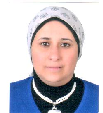
Biography:
Rania Hosny Tomerak is the Professor of Pediatrics and Neonatology in Cairo University. She was graduated in 1994 and obtained her Master degree in Pediatrics in 1998 and Doctorate degree in Pediatrics in 2001. She is an international board certified lactation consultant since 2004 (got the highest score in Egypt). She is a board member of Lactation education accreditation and approval committee in USA, which provides approval and accreditation to all breastfeeding programs all over the world. She has 21 published scientific papers (7 are Pub-Med cited: Tomerak RH, Tomairek RH)
Abstract:
Objectives: To study the frequency of occurrence of the different forms of primary dyslipidemia to display their various clinical presentations and their lipid profile before and six months after therapy.
Methods: Prospective study was conducted in the Cairo University Childrens' Hospital- Twenty primary dyslipidemic cases were included with history taking, clinical examination, electro-cardiography and echocardiography.
Investigations included: Total cholesterol, total triglycerides, LDL-C and HDL-C using enzymatic colorimetric methods, ApoA1, Apo B100 were evaluated using a Behring nephelometer. Different therapeutic modalities were offered and reassessment of laboratory tests was done every three months.
Results: Parents were consanguineous in 75%. Eleven cases had hypercholesterolemia; eight had xanthoma, one had xanthelasma, two had hypo pigmentation, three had corneal arcus, one had lipemia retinalis and six had cardiac manifestations among which one case had myocardial infarction and one case died. Three cases had hyper triglyceridemia; three had milky plasma, two had xanthoma, two had lipaemia retinalis, one case had pancreatitis and none had cardiac manifestations. Six cases had mixed hyperlipidemia; five had xanthoma, three had lipaemia retinalis and two had cardiac manifestations. After six months of multi-drug use, the laboratory lipid profile was unsatisfactory in majority of the cases.
Conclusion: Primary dyslipidemia may present early and pediatricians should have high index of suspicion. These children should be put on early strict lipid reduction protocols to prevent complications.
Catherine Taylor
Manchester University Medical School, UK
Title: The outcomes of children presenting with isolated ventricular septal defect

Biography:
Dr Catherine Taylor completed her undergraduate medical training at The University of Manchester, graduating in 2015 at the age of 23. During her time as a medical student she developed a particular interest in paediatric cardiology whilst conducting research in Dr Dhia Mahmood’s clinic. She is currently a junior doctor completing her foundation training in the East Anglian Deanery. She has an interest in acute medicine, education and medical research and hopes to pursue a career in paediatrics in the future. In her spare she enjoys running and is also a black belt in kickboxing.
Abstract:
AIMS: To analyse the closure rate of isolated ventricular defects in a cohort of 219 children, identifying trends relating to type and size of the defect, gender and age of the patient. Compare rates of endocarditis in these patients after the change in NICE guidance for endocarditis prophylaxis (2008). DESIGN: A retrospective study of all patients with isolated ventricular septal defects attending new or follow up Paediatric Cardiology appointments between January 2006 and May 2014 at Royal Preston Hospital. Those children with more complicated defects, including atrioventricular septal defects, coarctation of the aorta and Fallot’s tetralogy were excluded from the study due to differences in management and outcomes. Data was collected from clinic notes of patients included in the study criteria. RESULTS: 90 patients had perimembranous defects and 125 patients had muscular defects. 35% of the cohort had spontaneously closed defects. By 16 years of age, 48% of VSDs have closed spontaneously, although 93% of spontaneous closures occurred by 8 years of age. All patients requiring medical treatment or surgical closure had perimembranous & larger defects (>2mm). 75% of patients with associated genetic conditions had perimembranous defects. Of the cohort, 1% developed bacterial endocarditis. CONCLUSIONS: Factors reducing the likelihood of spontaneous closure of ventricular septal defects include those patients older than 8 years of age, those with perimembranous defects or defects which are larger than 1mm. Changes in NICE guidance for endocarditis prophylaxis (2008) have not increased the rates of bacterial endocarditis developing in patients with isolated ventricular septal defects.
- Special Session
Location: Rivieria
Session Introduction
Sonia El Saiedi
Cairo University, Egypt
Title: Radiofrequency perforation versus hybrid procedure in the treatment of pulmonary atresia- IVS: Challenges faced in developing countries

Biography:
Sonia El Saiedi has completed her graduation from Medical School, Cairo University in 1987. She was trained in Boston Children Hospital in 1998. Currently, she is working as Professor of Pediatric Cardiology in Cairo University Children Hospital, Egypt as well as she is the Director of Pediatric Cardiac ICU and Cardiomyopathy Clinic.
Abstract:
Pulmonary atresia with intact ventricular septum is an infrequent but enigmatic disorder with significant morphological heterogeneity. In the absence of aright ventricular– dependent coronary circulation, pulmonary valvotomy is a good choice to save the right heart a biventricular repair instead of univentricular repair currently practice in our country. The use of percutaneous RF-assisted perforation of theatretic valve and subsequent balloon dilation provides an easy but expensive overall procedure. The procedure, while technically challenging, can be expected to establish ante-grade flow successfully through the pulmonary valve in most of patients. More than 65 patients presenting with PA-IVS presenting to Cairo University Children Hospital (CUCH) were taken for RF perforation using Baylis RFP 100 generator with trials for cost limitations. For example, to minimize expenses: We stopped using the Protrack microcatheter and replaced this in most cases by the “wire tracks a wire” technique. We also replaced the use of the micro snare from the arterial end to mark the pulmonary valve by looping a coronary wire. Telescopic Luma catheter was replaced by using Mullin long sheath 5 or 6F through which the 4F catheter is passed. Fixing the wire and trying to limit the number of balloons used, replacing the Tayshack Mini balloons which was not always available with regular coronary balloons which are readily available. In case of unavailable 4F sheath with special curve we mostly used either 4F VER and reshaped it. We resorted to Hybrid procedure with the surgeon opening the chest and fixing the sheath in RV directed towards the pulmonary valve in case of failed peripheral vascular access. The challenges faced by the operator in the cath lab (especially in countries with less than optimal facilities) and the different solutions to overcome those challenges will be presented.
- Special Session
Location: Rivieria
Session Introduction
Guy Hugues Fontaine
Universite Pierre et Marie Curie, France
Title: An ARVCs overview: Right ventricular cardiomyopathy
Time : 14:25-15:05
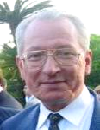
Biography:
Guy Hugues Fontaine has made 15 original contributions at the inception of cardiac pacemakers in the mid-60s. He has published more than 900 scientific papers including 201 book chapters. He is included in the Profiles in Cardiology (W Hurst 2003) book of the 216 individuals who have made a significant contribution to the study of cardiovascular diseases since 14th century. He has been included in the book “500 greatest Geniuses of the 21st century” of the American Biographical Institute (ABI 2005). He was the Reviewer of 17 journals both in clinical and basic science. He has served for 5 years as a Member of the Editorial Board of Circulation. He has been invited to give 11 master lectures of 90 minutes each during three weeks in the top universities of China (2014).
Abstract:
Arrhythmogenic Right Ventricular Dysplasia (ARVD) most frequent form is due to PKP2 desmosomal mutation with increased RV size with thinness of the free wall and segmental anomalies of contraction. This is in contrast with increased trabeculations at the RV apex. It is the result of the presence of apoptosis, fat and interstitial fibrosis mostly observed in the RV free wall and LV apex. This disease is frequent in the general population but become clinically apparent in a small number of cases. Disease starts in the embryo in the mediomural layers and has been detected in one case by Echo sonography. It is also the result of a unique PLN mutation. Clinical presentation is mostly ventricular arrhythmias which can lead to unexpected sudden cardiac death especially in young people and during endurance sports. Biventricular form is less frequent but caries a poorer prognosis. Some of these patients seen at a late stage of the disease can be misclassified as IDCM. Pathology of Heart Tx will re-establish the diagnosis. Fatty non-compaction (FNC) is common in the general population (60%) due to the presence of an excessive amount of fat in the RV free wall up to typical ARVD but without fibrosis. It is a determinant of prognosis in case of LV failure. Mutation is unknown. Brugada syndrome (BrS) has a unique ECG pattern of coved type observed only in lead V1. Structural changes are sometimes suggesting ARVD. However, BrS and ARVD are two different entities with some degree overlap both phenotypically and genotypically in a small number of cases. The vast majority in each entity has its own unique features. RVOT VT is generally benign but one personal case of SD with pathologic documentation demonstrated a localized infundibular anomaly suggesting ARVD with fragmentation of potentials by needle infundibular transmural electrode in another case. Uhl’s anomaly shows a huge RV with apposition of epicardium against endocardium. However, this can be a differential diagnosis with an extreme form of ARVD. Naxos disease originally detected by Echocardiography is the most impressive form of these RVCs because of its genotype in which both parents are affected by the same mutation of a desmosomal protein called Plakoglobin. However, the heterozygous form shows only minor ECG changes but no clinically significant disease. All of these cardiomyopathies can be affected by a wide clinical spectrum of superimposed myocarditis (which has also in some cases) a genetic background, frequently the determinant of prognosis. However, in some rare patients, the disease can stop completely spontaneously its progression.
- Sessions: Pediatric Cardiology | Heart Transplantation | Cardiac Diseases Pathophysiology | Cardiovascular Diseases
Location: Rivieria
Chair
Guy Hugues Fontaine
Universite Pierre et Marie Curie, France
Co-Chair
Weber Howrad
Penn State Hershey Children Hospital, USA
Session Introduction
Chuanxi Cai
Albany Medical College, USA
Title: Enhancing the effectiveness of human cardiac stem cell therapy with the HO-1 inducer-Cobalt Protoporphyrin (CoPP)
Time : 12:20-12:50

Biography:
Chuanxi Cai has completed his PhD from the Institute of Biophysics at Chinese Academy of Sciences in Beijing, China and Post-doctoral studies from UMDNJ-Robert Wood Johnson Medical School (RWJMS). Currently, he is the Associate Professor of Cardiovascular Medicine in the Albany Medical College. He has published 17 papers in reputed journals and has been serving as Editorial Board Member of several scientific journals.
Abstract:
The regenerative potential of c-kit+ cardiac stem cells (CSCs) is severely limited by the poor survival of cells after transplantation in the infracted heart. We have previously demonstrated that preconditioning human CSCs (hCSCs) with the HO-1 inducer, CoPP, has significant cytoprotective effects in vitro. Here, we examined whether preconditioning hCSCs with CoPP enhances CSC survival and improves cardiac function after transplantation in a model of myocardial infarction induced by a 45-min coronary occlusion and 35-day reperfusion in immunodeficient mice. At 30 min of reperfusion, CoPP-preconditioned hCSCsGFP+, hCSCsGFP+, or medium were injected into the border zone. Quantitative analysis with real time qPCR for the expression of the human specific gene HLA revealed that the number of survived hCSCs was significantly greater in the preconditioned-hCSC group at 24 hours, 7 and 35 days compared with the hCSC group. Co-immunostaining of tissue sections for both GFP and human nuclear antigen further confirmed greater hCSC numbers at 35 days in the preconditioned-hCSC group. At 35 days, compared with the hCSC group, the preconditioned-hCSC group exhibited increased positive and negative left ventricular (LV) dP/dt, end-systolic elastance and anterior wall/apical strain rate (although ejection fraction was similar), reduced LV remodeling, and increased proliferation of transplanted cells and of cells apparently committed to cardiac lineage. In conclusion, CoPP-preconditioning of hCSCs enhances their survival and/or proliferation, promotes greater proliferation of cells expressing cardiac markers, and results in greater improvement in LV remodeling and in indices of cardiac function after infarction.
Bala Joshi
Queens Hospital Center, USA
Title: The role of the asthma educator in pediatric practices
Time : 12:50-13:20

Biography:
Bala Joshi completed her B.A. degree from Queens College, 1987. She went on to complete her RRT in Respiratory Therapy from NYU School of Graduate Studies, 1994. Ms. Joshi began working at NYC Health + Hospitals/Queens in the year 2000 until present. She has held the position of a pediatric health educator for the last sixteen years. She has been a member of many organizations and associations and has been a consistent team player within a pediatric practice.
Abstract:
The role of the asthma educator within a pediatric practice has been shown to enhance and improve patient outcomes. Data has shown exactly how much of a change occurs during a pediatric well child visit when there is the intervention of an education specialist. In the New York City database from the 379NYC Department of Health and Mental Hygiene, the percentage of pediatric patients hospitalized due to asthma exacerbations has declined from the high 80% to the lower 30% due to the introduction of an asthma educator providing extensive asthma education, teaching and reinforcement of all medications and devices during the well-child care visit. Additional data has shown a decrease in the number of school absences due to asthma, again upon the proactive intervention of an asthma educator within the pediatric practice. Before the year 2000, at Queens Hospital Center, studies have shown pre-asthma educator involvement lead to higher well-child visit hospital admissions, emergency department (ED) visits and missed days of school. Clearly, there was a need for more intervention. The NYC Department of Health and Mental Hygiene had started to recognize these high rates within their public hospitals and, therefore, established initiatives tailored to meet the needs of these patients and allow them to be more involved with their care. The NYC Asthma Initiative was presented to public hospital outpatient clinics with mandatory requirements at all well-child pediatric visits. Some of these requirements were: The introduction of a written asthma action plan at each visit; the completion of the medications administration form (MAF); the use of a chamber or spacer always with all prescribed inhalers, and; lastly, to have an asthma educator provide teaching and asthma education during the well-child visit. The asthma initiative along with the NYC Asthma Partnership (NYCAP) wanted to improve outcomes of pediatric asthmatic patients with the implementation of these mandatory requirements. Queens Hospital Center, in the year 2000, decided to implement an education specialist within their pediatric practice, in particular as an addition to their pediatric pulmonary clinic. The asthma educator would work with the provider, nurse and team to ensure a well-rounded educational experience for the asthmatic patient. Weekly visits with the introduction of an asthma educator during the well-child visit had started to show more improvements in declining hospitalization rates, ED visits for asthma and school absences. This data was evident over the years by the NYC Department of Health and Mental Hygiene, citywide, as well as, borough to borough. Patients now became more empowered and more connected with their condition, and knew they could always contact the asthma educator for any services they needed. There was also more compliance to keeping all their appointments and follow-up with their providers.
Andreas C Petropoulos
Azerbaijan State Medical University, Azerbaijan
Title: Bicuspid aortic valve- A defect of many clinical presentations and in any age
Time : 15:00-15:30

Biography:
Andreas C Petropoulos graduated from Aristotle University’s Medical School, Greece in 1989. Following 30 year career as a medical officer, he joined as a senior Flight Surgeon in the Hellenic Air-Force. He has specialized in Aviation, Hyperbaric Medicine, Pediatrics, Fetal, Pediatrics and Congenital Cardiology in USA and Europe. He holds MSc in Preventive Cardiology. He is AEPC Prevention Working Group member. He has worked and lectured in Athens and Brussels universities. Currently, he consults in Fetal, Pediatrics, Congenital Cardiology in Merkezi Klinika and is Associate Professor at the State University and Post Graduate at CME Center in Azerbaijan. His research focuses on prevention, CVD imaging techniques, fetal cardiology and heart failure.
Abstract:
Bicuspid Aortic Valve (BAov) is the most common congenital heart defect (CHD). It’s prevalence rises from 0.5-2% of the general population. This unique defect can create a variety of clinical conditions presenting from fetal to late adulthood. The aim of this paper is to highlight the many unique clinical presentations of a BAov. These range from nearby asymptomatic mild valve stenosis of incompetence to coactation of the Aorta, aneurysms, dissections of Ascending Aorta or cerebrovascular vessels and sever double valve disease in any age. The extreme spectrum of it can lead in fetal life in Hypoplastic Left heart Syndrome. BAov is commonly seen in Turner’s, William’s and Marfan’s Syndromes as well as related with VSD’s and coronary arteries abnormalities. The paper finally aims to alert the Pediatric Cardiology community on the long life surveillance that individuals with BAov need and address the variety of interventional and surgical techniques that can be used to address the many and in any age clinical presentations of it.
Zeinab Salah Seliem
Cairo University Children Hospital, Egypt
Title: Early identification of subtle left ventricular dysfunction among asymptomatic survivors of childhood acute myeloid leukemia: Insights from the novel three dimensional speckle tracking echocardiography
Time : 15:30-16:00

Biography:
Zeinab Salah has completed her MD from Cairo University and Post-doctoral studies from Faculty of Medicine, Pediatric Hospital , Cairo University. She is the Former Head of Pediatric Cardiology Department , Postoperative cardiac ICU as well as cardiomyopathy clinic in the Pediatric Hospital, Cairo University. Currently, she is the Head of Cardiology Department in Children Cancer Hospital, the biggest pediatric health facility for cancer in Egypt and Middle East. She is the Principal Investigator of the project for creating Egyptian Center of Excellence for Pediatric Cardiology in the Children Hospital Cairo University, the biggest health facilty in Egypt.
Abstract:
Aim: To assess the value of novel three dimensional (3D) echocardiography and 3D speckle tracking echocardiography (3D-STE) for early detection of subtle LV myocardial dysfunction in asymptomatic survivors of childhood myeloid leukemia after anthracycline therapy.
Methods: Thirty five survivors of childhood acute myeloid leukemia (mean age 13.5±4.4 years) treated with anthracycline and 23 age-matched controls were studied. The mean period of follow up after anthracylines therapy was 2.3±1.5 years. All patients and control underwent 3D echocardiography and 3D-STE to assess global longitudinal (GLS), circumferential (GCS) and area strain (GAS).
Result: Compared to controls, patients had reduced GLS (16±3.11 vs. 18.30±2.38%, p=0.006), and area strain (24.29±4.12 vs. 26.78±2.64 0.015, p=0.015). No significant statistical difference was found between patients and control regarding GCS.
Conclusions: 3D-STE enables assessment of the deleterious effect of anthracyclines on the longitudinal myocardial deformation thus providing a novel tool for early detection of subtle LV dysfunction in childhood myeloid leukemia survivors.
Yang Lei
Nanjing Children’s Hospital, China
Title: Sildenefil increases connexin 40 in smooth muscle cells through activation of BMP pathways in pulmonary arterial hypertension
Time : 16:00-16:30

Biography:
Yang Lei got his Doctorate degree of Pediatrics from Nanjing Medical University. After his graduation, he was engaged in clinical and research work of Congenital Heart Disease in Nanjing Children’s Hospital affiliated to Nanjing Medical University. So far, he has chaired and completed development of science and technology of Nanjing Medical University foundation project. His study has been based on the development mechanism of the occurrence, clinical diagnosis and treatment in children with congenital heart disease. He has published 7 SCI papers. As the first inventor, he obtained 2 national patents (authorized), as the second inventor; he obtained 1 national patent (authorized).
Abstract:
Background: Pulmonary arterial hypertension (PAH) is a cardiovascular disorder associated with enhanced proliferation and suppressed apoptosis of pulmonary arterial smooth muscle cells (PASMCs). The sildenafil can regulate the Connexin (Cx) 43 in the PASMCs and thus inhibit the PASMCs proliferation and the remodeling of pulmonary arterial. However, how sildenafil exert regulation in the Cx40 in the PASMCs in PAH remains unclear.
Methods & Results: Using the rat PAH model induced by the monocrotoline, we demonstrated that the Cx40 in the PASMCs is down-regulated in the PAH. The sildenafil promotes the up-regulation of Cx40 in the PASMCs via bone morphogenetic protein (BMP) signaling, accompanied by an anti-proliferative response in PASMCs. Inhibition of the BMP axis reverses the up-regulation of Cx40 and anti-proliferation of the sildenafil in these cells. In monocrotaline-induced PAH rat models, which display reduced levels of BMP signaling, this study further indicates that the BMP-Cx40 axis is activated in lungs following the sildenafil treatment. Furthermore, we also find in vitro that sildenafil increases the Cx40 expression of PASMCs isolated from MCT-PAH rats and inhibit the proliferation of these cells. These phenomenon are reversed by LDN-193189, the antagonist of type II receptor for bone morphogenetic protein (BMPR2) treatment, providing strong evidence for the protect effect of sildenafil and the BMP-Cx40 axis involvement.
Conclusions: Taken together, these data suggest the sildenafil activate BMP-Cx40 signaling in the PAH. This axis may be a potential therapeutic target in PAH.
Naga Venkata Pothineni
University of Arkansas for Medical Sciences, USA
Title: Hepatitis C infection and the risk of Coronary artery disease – the known and unknown

Biography:
Naga Venkata Pothineni has completed his MD from Gandhi Medical College, India. He then went on to complete Internal Medicine residency training at the University of Arkansas for Medical Science, where he is currently pursuing a cardiology fellowship. He has achieved multiple academic honors through his medical training. He has published more than 20 papers in reputed journals and has been serving as an Editorial Board Member of 3 repute journals.
Abstract:
Hepatitis C is a common infection worldwide affecting approximately 3 million people in the United States. Though multiple infections have been associated with increased cardiovascular risk, the association between Hepatitis C infection and the risk of coronary artery disease remains unclear. A few previous studies have shown HCV infection to be atherogenic whereas others have shown it to be protective. We performed a retrospective study comparing the risk of incident cardiovascular disease in patients with and without HCV infection. We found that patients who are HCV positive (as detected by a positive HCV RNA) have a significantly higher risk of incident coronary artery disease even after controlling for various other risk factors such as hypertension, diabetes and hyperlipidemia. In addition, we selected a subgroup of patients with and without Hepatitis C infection who had coronary angiograms done and compared angiographic burden of CAD using the modified Gensini score.
Ali Dodge-Khatami
University of Mississippi Medical Center, USA
Title: Right axillary thoracotomy for transatrial repair of congenital heart defects: VSD, partial AV canal with mitral cleft, PAPVR/Warden, Cor Triatriatum and ASD
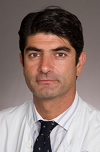
Biography:
Ali Dodge-Khatami graduated from medical school in Geneva, Switzerland, trained in cardiovascular surgery in Lausanne, Switzerland and obtained his PhD from the University of Amsterdam, The Netherlands. He is specialized in pediatric and congenital heart surgery to which he is dedicated since 1998, working in academic hospitals in Switzerland, the UK, The Netherlands, Germany, and currently in the USA. He is the Professor of Surgery and since 2011, he has authored more than 100 peer-reviewed articles, written 9 book chapters and goes on yearly global humanitarian surgical missions to promote sustainable pediatric heart programs in developing countries.
Abstract:
Objectives: When wanting to avoid a median sternotomy, the muscle-sparing right axillary thoracotomy has successfully been used for the transatrial repair of more simple congenital heart defects. With additional surgical experience using this approach, the spectrum of defects amenable to a quality repair has expanded.
Methods: Between 2008-2016, 48 patients (26 ASD, 10 ventricular septal defects (VSD) (including 3 with double –chambered right ventricle (DCRV), 8 Warden operations for partial anomalous pulmonary venous return (PAPVR), 3 partial atrio-ventricular canals with mitral valve cleft, and 1 cor triatriatum) underwent surgical repair through the right chest, using either induced ventricular fibrillation or aortic cross-clamping with cardioplegic arrest. The attached surgical video shows closure of a ventricular septal defect in a 10 month old infant girl.
Results: Age ranged between 4 months-18 years, and weight from 5.5-82kg. There was no mortality, no residual defects or peri-operative complications.
Conclusions: The muscle-sparing right axillary approach is a safe and reproducible technique to repair congenital heart defects typically accessible through the right atrium. In our experience, compared to other thoracic incisions, the approach is far away from breast tissue which is easily spared with minimal potential for future asymmetrical breast growth, no muscles are sacrificed with rapid functional recovery of the right arm and shoulder, and the cosmetic results highly appreciated by parents and patients alike. With gained expertise and surgeon comfort, the same high standards as through a median sternotomy are maintained without compromising repair quality.
Megan L Ringle
Miami Children’s Health System, USA
Title: A Case Report of Heterotaxy Syndrome Complicated by Abernethy Syndrome and Portopulmonary Hypertension

Biography:
Megan L Ringle is presently working in the Nicklaus Children’s Hospital at Miami, Florida. Her research interests are heterotaxy syndrome, Hypertension, Pulmonary vasodilator therapy etc.
Abstract:
Objective: To describe a unique case of heterotaxy syndrome complicated with Abernethy syndrome and a late diagnosis Methods: Literature review of heterotaxy syndrome, portopulmonary hypertension, and Abernethy syndrome Heterotaxy is a complex set of birth defects in which the normal concordance of asymmetric thoracic and abdominal organs is disturbed1. Typical manifestations include abnormal arrangement of organs, congenital cardiac heart disease, and extracardiac defects involving midline structures2. We report the case of a 14-year-old female in whom exercise-induced dyspnea due to pulmonary hypertension led to a diagnosis of heterotaxy complicated by Abernethy Syndrome and portopulmonary hypertension. After extensive workup she was found to have left isomerism consisting of two anatomic left lungs and hyparterial bronchi, bilateral left atria, an interrupted inferior vena cava with azygos continuation, multiple spleens, hepatic hypertrophy with focal nodular hyperplasia, and absence of the portal vein. Pulmonary vasodilator therapy was initiated resulting in clinical improvement. This case exhibits unique features including a late diagnosis of heterotaxy with Abernethy syndrome and portopulmonary hypertension. The patient’s presentation, medical workup, and future treatment emphasize the importance of multidisciplinary care in pediatrics.
Schusterová Ingrid
P J Å University in Kosice, Slovakia
Title: Infections due to various pathogens can lead to overweight and obesity: Adenovirus 36 and obesity

Biography:
Schusterová Ingrid is the Head of the Department of Pediatrics and Adolescent medicine, Children University Hospital P.J.Š. University in Košice, Slovakia. At the same time, she is the head physician in the tertiary center for valvular and congenital heart defects, Eastern Slovak Institute of cardiac and vascular diseases. She took specialization exam from adult and pediatric cardiology at National Institute of Cardiac and Vascular diseases in Bratislava, Slovak Republic. After graduation she took part in fellowship training at Ottawa Civic Hospital and later on performed research work in the area of cardiology at University of Ottawa in Canada. In the period from 11/1999 till 7/ 2004 she completed her training at Cardiologic department, II Internal medicine clinic, General hospital, Vienna under supervision of Prof. Dr. Gerald Maurer. Later in 2005 she broadened her professional knowledge and skills at Cardiac surgery clinic, Kardiocentrum Universitätsklinik in Bad Oyenhausen, Germany. Her research interests focus on preventive cardiology, obesity and disorders of lipid metabolism, atherosclerosis and their prevention in the pediatric age group.
Abstract:
Background: Obesity is global health problem. More studies confirmed that chronic low-grade inflammation is a characteristic for obese state. The role of adenovirus 36 (Ad-36), the most widely studied infectious agent in animals and humans is because of its association with obesity. Experimental animal studies have been clearly demonstrated the association between Ad36 and obesity, but human studies results are not yet been clarified. Aim: The aim of our study is to assess the association between Ad36 and obesity in high-school students in Kosice, region Eastern Slovakia. Methods: In prospective studies, in 224 healthy students, anthropometric parameters, waist circumference (WC), fasting plasma glucose and insulin, lipids, uric acid (UA) and hepatic enzymes were measured. Ad36 antibody was detected by ELISA test. Subsequently, we analyzed the relationship between obesity, lipid and glucose profile, including insulin resistance. Results: Prevalence of obesity in Ad36 positive study group was 20%. No statistical difference was found in prevalence of obesity between Ad36 positive and Ad36 negative study groups (p=0.92). No significant association was found between insulin resistance and Ad36 positivity. Prevalence of Ad36 positivity was significantly higher (p<0.01) in boys (36.9%) to compare the girls (18.1%), Ad36 positive boys were significantly higher. Ad36 positive adolescents with normal body weight had significantly increase body height (p<0.05) and body weight (p<0.05). Ad36 positive high- school students with normal weight had higher concentration of UA. Conclusion: In our study we did not confirm a clear association of Ad36 and obesity and lipids. But we found as a first the relationship of Ad-36 and hyper-uricemia in normal weight children. Further studies with a larger demographic amount of patients and other age categories are required to elucidate this biological mechanism of such complex relationship.
Rima Bader
King Abdulaziz University, Saudi Arabia
Title: Do prenatal intracardiac echogenic foci affect postnatal cardiac function?
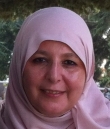
Biography:
Dr. Rima S Bader is currently working in the Dept. of Pediatrics, College of Medicine at King Abdulaziz University, Saudi Arabia. Her research interests are cardiac diseases diagnosis, myocardial diseases etc.
Abstract:
Introduction: Echogenic foci in the prenatal heart is uncommon . Objective: To determine whether prenatally diagnosed intracardiac echogenic foci are associated with neonatal cardiac dysfunction and persistence. Methods: Fetuses in which intracardiac echogenic foci were shown on prenatal sonography at 1 perinatal center from (September 2009 to December 2013) underwent postnatal echocardiography at ages 1 month to1 year.A single pediatric cardiologist assessed cardiac function by measuring the left ventricular shortening fraction and myocardial performance index. Presence of tricuspid valve regurgitation was sought. Results. Prenatally 60 fetuses had intracardiac echogenic foci, mean age ± SD at diagnosis (23 ± 3 .1). 53 (88.3 %) had left ventricular intracardiac echogenic foci(LVIEF), and 7 ( 11.6 %) had right ventricular intracardiac echogenic foci(RVIEF).12 preganant ladies were lost for follow up (2 fetuses of 7 (28,5%) with RVIEF., and 10 fetuses of 53 (18.8%) withLVIEF. Post natally, infants,32 (66.6 %) males and 16 ( 33.3%) females were examined. at a mean age ± SD of 7.4±3.1 months. Prenatally, all infants had a normal left ventricular shortening fraction.. The overall mean left ventricular myocardial performance index (reference value, 0.36 ± 0.06), was normal for both infants with LVIEF (0.32 ± 0.01) and those with RVIEF (0,33 ± 0.05).Trace tricuspid valve regurgitation were noted in 15 (31%) of the infants. LVIEF persisted in 15infants ( 34.8%), RVIEF persisted in 1 infant ( 20 %). Conclusions. Prenatally diagnosed intracardiac echogenic foci can be persistent but is not assosciated with myocardial dysfunction in the first year of life.

Biography:
Claudia Loardi obtained her MD Degree from University of Milano-Bicocca (Italy) in 2005. Her specialization in school for Master Degree Heart Surgery in 2010 from University of Milan (Italy) and PhD from University of Milan (Italy) in 2015. She is a Staff Member for Heart Surgeon Tours University Hospital (France) from 2011-present. She has 16 publications to her credit indexed in Medline.
Abstract:
The radiofrequency maze procedure achieves sinus rhythm in 45%-95% of patients treated for atrial fibrillation. This retrospective study evaluates mid-term results of the radiofrequency maze-performed concomitant to elective cardiac surgery-to determine sinus-rhythm predictive factors, and describes the evolution of patients' echocardiographic variables. From 2003 through 2011, 247 patients (mean age, 64±9.5 yr) with structural heart disease (79.3% mitral disease) and atrial fibrillation underwent a concomitant radiofrequency modified maze procedure. Patients were monitored by 24-hour Holter at 3, 6, 12 and 24 months, then annually. Eighty-four mitral-valve patients underwent regular echocardiographic follow-up. Univariate and multivariate analysis for risk factors of maze failure were identified. The in-hospital mortality rate was 1.2%. During a median follow-up of 39.4 months, the late mortality rate was 3.6%, and pacemaker insertion was necessary in 26 patients (9.4%). Sinus rhythm was present in 63% of patients at the latest follow-up. Predictive factors for atrial fibrillation recurrence were arrhythmia duration (hazard ratio [HR] =1.296, P=0.045) and atrial fibrillation at hospital discharge (HR=2.03, P=0.019). The mono-polar device favored maze success (HR=0.191, P <0.0001). Left atrial area and indexed left ventricular end-diastolic volume showed significant decrease both in sinus rhythm and atrial fibrillation patients. Early sinus rhythm conversion was associated with improved left ventricular ejection fraction. Concomitant radiofrequency maze procedure provided remarkable outcomes. Shorter preoperative atrial fibrillation duration, mono-polar device use, and prompt treatment of arrhythmia recurrences increase the midterm success rate. Early sinus rhythm restoration seems to result in better left ventricular ejection fraction recovery.
Maureen B Teves
Jose R Reyes Memorial Medical Center, Philippines
Title: Caregiver compliance to confirmatory testing for G6pd deficiency at a tertiary government medical center

Biography:
Maureen B Teves completed her residency in Pediatrics in December 2014 from Jose R. Reyes Memorial Medical Center, where she handled the position of Resident Physicians’ Organization Representative for the Department of Pediatrics.
Abstract:
Background: Glucose-6-Phosphate Dehydrogenase (G6PD) deficiency is an inherited condition that can lead to a spectrum of symptoms if exposure to offending agents is not prevented. The newborn screening is a useful tool that detects the presence of this condition, as is the confirmatory test. Non-compliance to confirmatory testing has been attributed to lack of time, poor understanding of the procedure and lack of money. Objective: To determine the compliance to confirmatory testing of patients who tested positive for G6PD Deficiency via Newborn Screening Test at a tertiary government medical center between the years 2013 to 2014. Methods:This is a retrospective cross-sectional study conducted among patients who were born and underwent newborn screening at a tertiary government medical center on January 2013 to December 2014. We conducted a follow-up survey using structured questionnaires over the phone to assess the compliance of the parents and caregivers to confirmatory testing. Results: Out of the 3,570 infants who were delivered at the medical center, 143 (4%) were positive for G6PD deficiency on newborn screening test. We were able to track 62 patients, of which 39 (62.9%) were able to comply with confirmatory testing. The most common reasons for non-compliance to confirmatory testing were the following: “busyness/lack of time” (47.83%), uninformed (21.74%), and lack of funds (21.74%). Conclusions:Reasons for non-compliance are lack of time, lack of knowledge and financial constraints. This shows that there is a need to improve the patient education programs of medical centers, particularly on the newborn screening program.

Biography:
Hannalae Grace M Dulay-See is a graduate of University of Santo Tomas Faculty of Medicine and Surgery. She has undertaken Pediatric Residency in Makati Medical Center, Philippines.
Abstract:
Objective: To determine the effectiveness and safety of oral and intravenous paracetamol compared to oral ibuprofen in the closure of a PDA in preterm infants. Design: A retrospective cohort study was performed involving 28 cases of premature infants at a private tertiary hospital from January 1, 2010 to June 30, 2014. Each patient received either oral paracetamol at a dose of 15 mg/kg every 6 hours for 3 days or oral ibuprofen at an initial dose of 10 mg/kg followed by 5 mg/kg at 24 and 48 hours. Results: The PDA closure rates for both drugs were identical at 64.3% (9/14). The mean days of closure for the paracetamol group was shorter at 1.5 ±.46 days in contrast to the ibuprofen group which is 2.7 ±0.48 days.(P=0.00) There were no significant differences between the two groups in the incidence of adverse events. There were more preterms that had gastrointestinal bleeding in the ibuprofen group (28.6%) compared to paracetamol group (7.1%). (P=0.326). Platelet counts in the ibuprofen decreased after one week of treatment at -87±115.84, while that of paracetamol group increased by 12±92.34. (P=0.048) Conclusions: Paracetamol has its place with equal efficiency in the closure of PDA compared to ibuprofen which is the standard drug for the medical treatment of PDA. Paracetamol with its lower incidence of adverse events may replace ibuprofen as a drug of choice in the treatment of PDA in preterm infants.
Yuni Twiyarti Pertiwi
University of the East Ramon Magsaysay, Philippines
Title: Permanent Pacing in a Premature Infant with Isolated Congenital Complete Atrioventricular Block: A Case Report
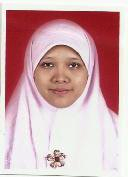
Biography:
Yuni Twiyarti Pertiwi completed medical school at the age of 25 years from Padjadjaran University, Bandung, Indonesia and now in her Cardiology residency at at third years from Padjadjaran University, Indonesia.
Abstract:
Congenital complete atrioventricular block (CCAVB) is a rare and potentially lethal disease with an estimated incidence of 1 in 15.000 to 20.000 live born infants. Most of the patients with CCAVB have structurally normal hearts, referred to as an ‘isolated’ CCAVB. We present the case of a premature infant with CCAVB who underwent implantation of a permanent pacemaker. The male infant was born at 33 weeks of gestation and weighed 2150 g. Repeat fetal ultrasound assessment before demonstrated fetal cardiomegaly increased at 30 weeks gestation. The decision was made to deliver the baby by cesarean section at 33 0/7 weeks gestation. After birth, the infant showed respiratory distress despite antenatal corticosteroid therapy. There were no clinical signs of hydrops fetalis. The heart rate ranged between 40 and 50 bpm. An electrocardiogram showed that the rate of P wave was 120 bpm and the rate of QRS wave was 50 bpm. The chest x-ray demonstrated dilated heart and echocardiogram showed dilated chambers, small non significant PDA with left to right shunt, no ASD or VSD, and satisfactory contracted ventricles. Respiratory problem was resolved after supportive treatment with temporary pacing. He underwent succesfull implantation of a permanent transepicardial pacemaker (VVIR mode, stimulation rate 120 bpm, output 1,5 mV and sensitivity 2,6 mA). A unipolar epicardial lead was used and the pulse generator was implanted in a pocket made under at the anterior rectus sheath. Surgery was performed without any complications. There was no respiratory problem associated with pacemaker implantations in the abdominal wall. He was discharged at the age of 31 days with a weight of 2350 g. At the 1-year follow up he remains in well condition without any complications. We have reported a case of a CCAVB with succesfull implantation of permanent pacemaker.

Biography:
Thomas S Mir has completed his PhD from Hamburg University. He is the Vice-Director of Clinic for Pediatric Cardiology at University Heart Center Hamburg. He has published more than 50 papers in reputed journals and has been serving as an Editorial Board Member of repute.
Abstract:
Introduction: MFS is an inherited connective tissue disorder in which aortic root dilatation remains the significant indicator for morbidity and mortality. After recent publication of the pediatric multicenter study and publication of our mono-centric data concerning the effectiveness and tolerability of therapy with ARB vs. beta blocker (BB) we would like to present an actual update after six years of experience. Methods: We identified 126 children with confirmed MFS. Indication for prophylaxis was found in 64 patients and was subjected to standardized diagnostic program including echocardiography, MRI and clinical examination. We examined the effectiveness of therapy with ARB (n=44) on the growth of the sinus valsalvae (SV) with comparison of z-scores of SV before treatment and during follow up and compared these data to patients treated with BB (n=20) only. Results: Treatment by ARB and BB leads to significant reduction of SV dilation (p<0.05). The deviation of SV enlargement from normal as expressed by the rate of change in z-scores was significantly reduced by a mean difference of −0.57±0.65 z-scores (p<0.05) under ARB therapy and by a mean difference of −0.42±0.55 z-scores (p<0.05) under BB therapy. The effect of ARB and BB on aortic root dilation is similar in both groups (p>0.05). Therapy with BB was discontinued in 20% (4/20). No discontinuation in the ARB group (0/34). Conclusion: The prophylactic effect of ARB and BB in pediatric patients with MFS is similar but tolerability of ARB is clearly superior. In addition inhibition of TGF-ß signaling by ARB which is supposed to contribute to the pathogenesis of MFS has to consider.
- Sessions: Pediatrics Healthcare | Pediatric Pulmonology | Coronary Heart Diseases | Heart Surgery | Advance Therapies | Interventional Cardiology
Location: Rivieria
Chair
Randy Richardson
St Josephs Hospital and Medical Center, USA
Co-Chair
Sonia El Saiedi
Cairo University, Egypt
Session Introduction
Randy Richardson
Creighton University School of Medicine, USA
Title: Impact of pre-procedural simulation and planning using 3D resin (solid) and photopolymer (flexible) models on interventional cardiac procedures
Time : 11:55-12:25

Biography:
Randy Richardson is the Chairman of radiology at St. Joseph's Hospital and Medical Center and the Associate Dean for Creighton University School of Medicine Phoenix Campus. He is Professor of radiology for the Creighton Schools of Medicine and Adjunct Professor at Arizona State University School of Biological and Health Systems Engineering. He is the author of a textbook, 31 book chapters, 11 syllabi, 44 scientific exhibits, 24 scientific papers, 22 peer reviewed journal articles, 3 websites and 14 multimedia presentations. His area of expertise and research has been in the field of cardiac MRI and CT imaging in children.
Abstract:
Pre-surgical planning using imaging in pediatric congenital and acquired heart disease has played a vital role in patient outcomes for many decades. With advances in 3D printing technology we are now able to take patient specific imaging data and create 3D patient specific physical models. These models can be used to for pre-procedural patient specific simulations of cardiac procedures. We have successfully performed pre-procedure simulated procedures on physical modelsina patient with aortic stenosis undergoing percutaneous aortic valve placement where the size of the valve was in question, two patients with VSD from myocardial infarction that needed a device closure and to predict compatibility of donors and recipients for heart transplants. In all cases the simulated procedure had a significant impact on the actual procedure resulting in decreased time of procedure compared to standards, influenced the choice of the device chosen and was key in predicting correct sizing of implant. All though the numbers are small the impact seems to be significant.
Marie-Pierre Flament
University of Lille, France
Title: Multi-particulate dosage form for pediatric use
Time : 12:25-12:55

Biography:
Marie-Pierre Flament obtained a PhD (1994) in Pharmaceutical Technology from the University of Lille by studying nebulization for pulmonary delivery of alpha 1 protease inhibitor. She became Lecturer at the University of Lille in 1995 and Professor in Pharmaceutical Technology in 2012. She is Vice-dean of the Faculty Engineering and Health Management (Lille) since 2015. She is a member of the research unit INSERM U 1008 “Controlled Drug Delivery Systems and Biomaterials”. Her research activity focuses mainly on pulmonary drug delivery and paediatric formulations but also on powder characterization, extrusion-spheronization, compression and coating.
Abstract:
In recent years, regulations on pediatric medicines have induced an increased need for research into novel child - appropriate dosage forms. Indeed, children cannot be considered as “small adults” as they present different anatomical and physiological characteristics. Whatever the route of administration, the age-appropriateness of the formulation is of major importance and has to be taken into consideration. The development of new pediatric dosage forms encounters technical complexities such as dose modification, ease of administration/swallowing, taste-masking, chemical and physical stability, preservation, considerations of a multi-phase and/or multi-use product, packing, providing/designing the measuring device. Innovations are important and the research of new ways to deliver medicines tends to improve compliance, convenience and pharmacokinetics. Recently, the World Human Organization recommended that small sized solid forms or orally disintegrating solid forms should be favored. Solid multi-particulate systems such as pellets have the advantage to cover a broad range of doses for different patients. Dose adjustment can be accurately done by means of dosing device such as a multi-particulate counting device. Developing multi-particulate dosage form with fast disintegration can be useful for children as they present both advantages of solid and liquid formulations. This led to the concept of Orally Dispersible Tablet which disintegrates rapidly in the mouth into small particles or pellets. Their small size enables them to be well distributed along the gastrointestinal tract improving the bioavailability while reducing local drug concentration, risk of toxicity and side effects. They offer easy swallowing and dose flexibility for pediatric patients and caregivers.
Yousef Etoom
University of Toronto, Canada
Title: Sudden cardiac death (SCD) in children
Time : 12:55-13:25

Biography:
Dr. Etoom is an Assistance Professor at University of Toronto, Department of Paediatrics. Staff Physician, Paediatric Emergency Medicine at the Hospital for Sick Children,Toronto. Staff Paediatric Cardiology and Post-Graduate Medical Education Director, Paediatric Department at St. Joseph Health Center, Toronto. He received his Medical degree from Jordan University of Science and Technology and earn his Fellowship training in Paediatric Intensive Care, Cardiology, and Paediatric Emergency at The Hospital for Sick Children, Toronto.
Abstract:
Sudden cardiac death (SCD) and Sudden cardiac arrest (SCA) in children and adolescents are rare. The underlying cardiac disease associated with SCA varies with age. For children two years old or younger, congenital heart disease is the predominant cause of SCA. For older children and adolescents, there is no dominant cause of SCA. Cardiac disorders include congenital heart disease, primary arrhythmias. Genetic cardiac diseases associated with SCA and SCD include cardiomyopathies, ion channelopathies resulting in conduction defects, and familial Wolff-Parkinson-White syndrome. The immediate cause of SCA and SCD appears to be a life-threatening and often lethal ventricular tachyarrhythmia. Although SCA is often the initial presenting event, warning signs or symptoms (eg, chest pain, fatigue, seizures, and syncope/ lightheadedness) are noted in at least 40 percent and up to 70 percent of individuals prior to SCA. Other disorders that need to be distinguished from an underlying cardiac disease include vasovagal syncope, migraine headaches, seizures, musculoskeletal conditions that present with chest pain, asthma, near-drowning, and sudden infant death syndrome (SIDS). Preventive strategies to reduce SCD include primary screening to identify and manage at-risk individuals, and secondary prevention with successful resuscitation of individuals with SCA.
Chun-Ming Jiang
The First Affiliated Hospital of Nanjing Medical University, China
Title: Ligusticum wallichii elevates the proliferation of hypoxia-stimulated human microglia through promoting HIF-1α-mediated MET expression
Time : 15:05-15:35

Biography:
Chun Ming Jiang has completed his MM from Wenzhou Medical University and MD studies from Nanjing Medical University of Medicine. He is the Attending Doctor and Senior Researcher of the Affiliated Hangzhou Hospital of Nanjing Medical University. He has published more than 10 papers in peer-reviewed journals and has been serving as an Editorial Board Member of repute.
Abstract:
During the hypoxia-involved neonatal stroke, microglial cells take part in endogenous defense mechanisms to prevent the brain injury. Thus, the reasonable therapeutic intervention in this disease may be the increase of microglia proliferation. In our study, we primarily found that Ligusticum wallichii enhances the proliferation of hypoxia-stimulated human microglia by increasing the cell cycle. Furthermore, Ligusticum wallichii differentially regulated the expression of a lot of genes, in which MET gene, encoding a cell surface receptor tyrosine kinase for recognizing hepatocyte growth factor ligand, acts an important down-stream effective molecule for Ligusticum wallichii in treatment with hypoxia-induced human microglia by using RNAi technique. Moreover, Ligusticum wallichii enhances the binding of HIF-1α to the promoter of MET gene in hypoxia-treated human microglia, providing the rational explanation why Ligusticum wallichii plus hypoxia-administrated human microglia have highest MET expression. Collectively, we have identified a potential mechanism by which MET regulated by HIF-1α contributes to Ligusticum wallichii-mediated increase of proliferation of hypoxia-induced human microglia. Thus Ligusticum wallichii and targeting MET should be considered as two potential strategies for enhancing the hypoxia-stimulated human microglia.
Takashi Sasaki
Kanagawa Children’s Medical Center, Yokohama, Japan
Title: Prenatally planned hybrid cardiac procedure in critically ill neonates with complex congenital heart disease
Time : 15:35-16:05

Biography:
Takashi Sasaki graduated from Nippon Medical School in 1998. After cardiothoracic residency, he studied optimal cardiopulmonary bypass management for neonates with arch anomaly at Stanford University. Then he completed pediatric cardiac surgery fellowship at British Columbia Children’s Hospital. He came back to Japan in 2012 and is currently working at Nippon Medical School and Kanagawa Children’s Medical Center.
Abstract:
Objective: To review the outcomes of hybrid cardiac surgery for critically ill neonates with complex congenital heart disease.
Methods: Retrospective review in five hybrid cases performed between 2010 and 2015.
Results: Age at surgery was as follows; within the first 90 minutes after birth in 3, 1 day in 1 and 2 days in 1. All but one was diagnosed prenatally and planning for hybrid procedure was made before birth. There were hypoplastic left heart syndrome (HLHS) with severely restrictive atrial septal defect (ASD) in 3 and critical aortic stenosis (AS) with borderline left ventricular function in 2. All procedures were performed through a median sternotomy. In neonates with HLHS, ASD was created with a stent inserted through the right atrial wall followed by bilateral pulmonary artery banding (PAB). In neonates with AS, bilateral PAB was performed followed by balloon aortic valvotomy via the brachiocephalic artery. ASD was created in one of two patients with critical AS for LV rehabilitation. One died of coronary hypoperfusion after ASD stent insertion presumably due to sinusoidal communication. There were two late deaths including one in HLHS caused by peripheral pulmonary venous obstruction and one in AS due to hemorrhage during balloon dilatation of PA. One completed Fontan and one completed biventricular repair.
Conclusions: Hybrid procedure enabled us to perform ASD creation and regulation of pulmonary blood flow as well as aortic valvotomy simultaneously without use of cardiopulmonary bypass immediately after birth in critically-ill neonates. Prenatal diagnosis was useful in planning hybrid procedures before birth. A highly advanced collaboration among a multidisciplinary team must be a crucial step to further success.
Makoto Nabetani
Osaka Medical Center and Research Institute for Maternal and Child Health, Japan
Title: Experiences of therapeutic hypothermia therapy on six cases with persistent pulmonary hypertension and moderate to severe hypoxic ischemic encephalopathy using inhaled nitric oxide therapy

Biography:
Makoto Nabetani is currently working in the department of Neonatal Medicine at Osaka Medical Centre and Research Institute for Maternal and Child Health, Japan.
Abstract:
We experienced six cases that could undergo therapeutic hypothermia (TH) therapy combined with inhaled nitric oxide (iNO) therapy and one persistent pulmonary hypertension (PPHN) case who could undergo and stop TH during 2002-2014. We experienced no complication in these six cases. We have compared perinatal factors, MRI findings around one-year-old, Gross Motor Function Classification System (GMFCS) and developmental quotient around one and a half year old between 6 cases who underwent TH therapy completely combined with iNO therapy (TH + iNO group) and 38 cases who underwent only TH therapy (TH group). There are no significant differences of perinatal factors, MRI findings, GMFCS and developmental quotient between (TH + iNO group) and (TH group). These results showed TH could be performed safely for HIE cases with PPHN combined with iNO therapy maintaining the stable condition of respiration and circulation. We need to investigate more PPHN cases with iNO therapy to clarify criteria which cases could be performed TH therapy safely.
Kobata Keisuke
Osaka Medical Center and Research Institute, Japan
Title: Experiences of therapeutic hypothermia therapy on six cases with persistent Pulmonary hypertension and moderate to severe hypoxic ischemic encephalopathy using inhaled nitric oxide therapy

Biography:
Dr. Makoto Nabetani currently working in the department of neonatal medicine at Osaka Medical Center and Research Institute for Maternal and Child Health, Japan.
Abstract:
We experienced six cases that could undergo therapeutic hypothermia (TH) therapy combined with inhaled nitric oxide (iNO) therapy and one persistent pulmonary hypertension (PPHN) case who could undergo and stop TH during 2002-2014. We experienced no complication in these six cases. We have compared perinatal factors, MRI findings around one-year-old, Gross Motor Function Classification System (GMFCS) and developmental quotient around one and a half year old between 6 cases who underwent TH therapy completely combined with iNO therapy (TH + iNO group) and 38 cases who underwent only TH therapy (TH group). There are no significant differences of perinatal factors, MRI findings, GMFCS and developmental quotient between (TH + iNO group) and (TH group). These results showed TH could be performed safely for HIE cases with PPHN combined with iNO therapy maintaining the stable condition of respiration and circulation. We need to investigate more PPHN cases with iNO therapy to clarify criteria which cases could be performed TH therapy safely.
Karapetyan N.G
Bakuolev Scientific center for cardiovascular surgery, Russia
Title: Rotational angiography and 3D modeling in diagnostics and treatment of CHD

Biography:
Karapetyan N G has completed his PhD from Bakuklev Scientific Center for Cardiovascular Surgery. He is a Practicing Physician. He has published more than 15 papers in different journals and has been serving as a Faculty in TCT Russia during 2015 and 2016.
Abstract:
3D rotational angiocardiography (3D RA) is a relatively new method in the treatment of CHD, number of publications is not very large, and there are still many unresolved issues.
Aim: The aim of the study was to evaluate the capability of 3D RA using in diagnosis and treatment of congenital heart disease, and its comparison with the standard angiocardiography.
Material & methods: From 2012 to 2015, in 150 patients with various CHD, 169 3D RA were performed and compared with standard angiocardiography. Patients were divided into 6 groups: Pulmonary artery (n=41), right ventricle outflow tract (n=50), great veins (n​=24), aorta (n=21), abnormal communication between major vessels (n=16), the left ventricular outflow tract (n=17). The criteria for the comparative analysis have been visualization quality, additional information, the radiation dose, the amount of contrast agent during the study and study time.
Results: The study resulted that 3D RA had visualization quality better than standard angiocardiography in patients with peripheraland bifurcation PA stenosis; in patients with communications between the main arteries; in patients with aneurysm of the right ventricular outflow tract, in patients with obstruction of the left ventricle outflow tracts and in patients with great veins examination. Radiation dose during 3D RA was 503.4±350 cGy/cm2, while during standard angiocardiography – 820.8±400 cGy/cm2 (p=0.036). Study duration was 14.1±10 minutes using 3D RA and 15.1±9 minutes using standard angiocardiography. The volume of used contrast agent was 49.9±35 mL in 3D RA group and 47.8±38 mL in standard angiocardiography, without significant difference. 3D RA contributed additional important information due to possibility of achieving three-dimensional models and obtain unlimited angulations.
Conclusion: 3D RA is high-quality and safe method of imaging of the heart and vessels in patients with a various CHD compared with standard angiocardiography. Using 3D RA often reveals important additional information about the anatomy area of examination.
Prof Sonia El Saiedi
Cairo University, Egypt
Title: Clinical Course and Prognosis of Hypertrophic Cardiomyopathy in Egyptian Children

Biography:
Prof. Sonia El Saiedi is working as Professor of Pediatric Cardiology in the Cairo University Children Hospital, Egypt as well as she is director of Pediatric Cardiac ICU and Cardiomyopathy Clinic.
Abstract:
Pulmonary atresia with intact ventricular septum is an infrequent but enigmatic disorder with significant morphological heterogeneity. In the absence of a right ventricular– dependent coronary circulation, pulmonary valvotomy is a good choice to save the right heart a biventricular repair instead of univentricular repair currently practice in our country. The use of percutaneous RF-assisted perforation of the atretic valve and subsequent balloon dilation provides an easy but expensive overall procedure. The procedure, while technically challenging, can be expected to establish ante-grade flow successfully through the pulmonary valve in most of patients. More than 65 patients presenting with PA-IVS presenting to Cairo University Children Hospital (CUCH) were taken for RF perforation using Baylis RFP 100 generator with trials for cost limitations. For example, to minimize expenses: We stopped using the Protrack microcatheter and replaced this in most cases by the “wire tracks a wire” technique. We also replaced the use of the micro snare from the arterial end to mark the pulmonary valve by looping a coronary wire. Telescopic Luma catheter was replaced by using Mullin long sheath 5 or 6F through which the 4F catheter is passed. Fixing the wire and trying to limit the number of balloons used, replacing the Tayshack Mini balloons which was not always available with regular coronary balloons which are readily available. In case of unavailable 4F sheath with special curve we mostly used either 4F VER and reshaped it. We resorted to Hybrid procedure with the surgeon opening the chest and fixing the sheath in RV directed towards the Pulmonary valve in case of failed peripheral vascular access. The challenges faced by the operator in the cath lab (especially in countries with less than optimal facilities) and the different solutions to overcome those challenges will be presented.
Jeffrey Hellinger
New York Cardiovascular Institute, Lenox Hill Radiology, USA
Title: Pediatric Cardiovascular CT Angiography: Maximizing Image Quality at Low Radiation Dose

Biography:
Jeffrey Hellinger MD, MBA FACC is a pediatric and adult radiologist with subspecialty fellowship training in Cardiovascular Imaging from Stanford University School of Medicine and Interventional Radiology from Emory University School of Medicine. Dr. Hellinger received his medical degree from the University of Miami School Of Medicine, interned in general surgery at Jackson Memorial Hospital / University of Miami and completed diagnostic radiology residency at Emory University. Dr. Hellinger has completed his master’s in business administration with a focus on healthcare management. Dr. Hellinger’s academic work focuses on radiation safety and appropriate use of imaging modalities. This work has led to multiple publications of original research, review articles, and book chapters. Dr. Hellinger has also contributed to multiple society guideline documents and consensus statements.
Abstract:
Imaging the pediatric cardiovascular system with computed tomography angiography (CTA) is dependent upon radiation. Patient centric CTA protocols are essential to balancing radiation safety and image quality. These protocols are designed to deliver an appropriate amount of radiation which will ensure acceptable high diagnostic quality and the lowest required radiation exposure for the pediatric patient. Optimal contrast delivery and iterative reconstruction are two strategies to optimize image quality while dialing down the radiation parameters. In this lecture, these and other CTA protocol strategies will be discussed and illustrated. By attending this lecture, the following learning objectives will be achieved:
- An understanding of patient and technological determinants for CTA protocol decision making
- An understanding of primary CTA strategies for low radiation exposure and optimization of image quality
- An understanding of secondary CTA strategies for low radiation exposure and optimization of image quality
Chiara Bernelli
Azienda Ospedaliera Papa Giovanni XXIII, Italy
Title: Impact of culprit plaque and atherothrombotic components on incomplete stent apposition in patients with ST-elevation myocardial infarction treated with everolimus-eluting stents

Biography:
Chiara Bernelli is an Interventional Cardiologist at Azienda Ospedaliera Papa Giovanni XXIII of Bergamo, Italy. She graduated from the Medical University of Genoa, Italy, in 2007 where she obtained the medical and the cardiology degree with honor. She also completed her fellowship in Interventional Cardiology at San Raffaele Scientific Institute, Milan, Italy. She has been published as a main author and co-author in several cardiology journals. Her research interests include left main coronary artery disease, drug eluting stents, acute coronary syndrome and percutaneous treatment of structural heart disease with a special interest for transcatheter aortic valve implantation. She is also specialized in intracoronary imaging with focus on optical coherence tomography. She has actively participated as a speaker at many key conferences including PCR, TCT and ESC . She has authored several article and chapter books in peer review journals as well as she is currently a reviewer for several cardiologic journals.
Abstract:
Objectives: To investigate the impact of culprit plaque and atherothrombotic components on incomplete stent apposition (ISA) in patients with ST-segment Elevation Myocardial Infarction. (STEMI) Background: The role of the culprit plaque and related atherothrombotic components on ISA occurrence after primary percutaneous coronary intervention (p-PCI) is unknown. Methods: STEMI patients undergoing p-PCI with everolimus-eluting stent (EES) were prospectively investigated with Optical Coherence Tomography (OCT) of the infarct-related artery before, after stenting and at 9-month follow-up. Data derived from serial OCT, histopathological analysis of thrombus-aspirates and serum inflammatory biomarkers were analyzed. Results: 114 patients with 114 EES-treated lesions were evaluated. Acute-ISA occurred in 82 (71.9%), preferentially in larger vessels, with a median area of 0.2 mm2 [IQR 0.1-0.4]. The presence of thrombus before stent implantation (OR 5.5, 95%CI [1.1-26.9], p=0.04) and the lipid content in the target segment (OR 1.3, 95%CI [1.0-1.5], p=0.04) independently predicted acute ISA. At 9-month, ISA persisted in 46 (56.1%) lesions, significantly predicted by the volume of acute-ISA (OR 1.3, 95%CI [1.1-1.5], p=0.01). Late-acquired ISA occurred in 39 (34.2%) lesions with a median area of 0.3 [0.1-0.4] mm2. Red/ mixed thrombus before stent implantation (OR 3.7, 95%CI [1.0-13.3], p=0.05) and length of the underlying ruptured plaque (OR 1.7, 95%CI [1.1-2.8], p=0.02) were independently associated with late-acquired ISA. Conclusions: In STEMI patients undergoing p-PCI, culprit plaque and atherothrombotic components of the infarct-related artery significantly contribute to the onset of acute- and late ISA. ISA persistency at follow-up depends on the initial volume of malapposition.
Rahul Rathod
Boston Children's Hospital, Boston, USA
Title: Advanced imaging in Fontans: How does the data help us?

Biography:
Dr. Rathod completed his medical school at Case Western Reserve University and his pediatrics residency at Rainbow Babies and Children’s Hospital in Cleveland, Ohio. He also served for an additional year as Chief Resident. He subsequently completed his cardiology fellowship at Boston Children's Hospital, including serving as Chief Fellow. His cardiology training included a fourth year as Senior Non-Invasive Fellow. Dr. Rathod is staff cardiologist in the Department of Cardiology at Boston Children's Hospital and is an Assistant Professor at Harvard Medical School. His research interests focus primarily on the use of advanced CMR technologies in predicting outcomes of patients with complex congenital heart disease. Dr. Rathod has 31 publications in reputable journals, including 8 papers related to patients with single ventricle or Fontan physiology.
Abstract:
Patients with functional single ventricle congenital heart disease have complex anatomy and physiology. The final surgical pathway often culminates in the Fontan procedure. Despite improving clinical outcomes in the first several years of life, adverse outcomes are common and increase in frequency as these patients become older. These adverse outcomes include death and significant co-morbidities including protein-losing enteropathy, exercise intolerance, heart failure, arrhythmias, liver cirrhosis, thrombus, and stroke. The purpose of this talk would be a multi-modality review of advanced imaging in patients late after the Fontan operation. Non-invasive parameters that have been shown to be predictive of adverse outcomes would be highlighted and receive the most in depth review. This talk would include review of the utility of echocardiography, cardiac magnetic resonance imaging, and cardiac CT. The strengths and weaknesses of each modality would be reviewed in detail. Illustrative imaging case examples would be scattered throughout the talk. This would include some advanced techniques as well, including ventricular strain analysis, myocardial viability assessment, aortopulmonary collateral flow quantification, and 4D flow analysis. In addition to the cardiac imaging described above, a brief review of the non-invasive modalities to evaluate Fontan associated liver disease will also be discussed, including echocardiographic and magnetic resonance based liver elastography.

Biography:
Dr. Elissa Dyann Soriano completed her residency in Pediatrics last August 2015 from Jose R. Reyes Memorial Medical Center, where she handled the position of Associate Chief Resident for 6 months and Chief Resident for another 19 months. She has taken an interest in pediatric cardiology, aiming to undergo fellowship training in the said field.
Abstract:
Background: Student athletes are routinely screened by physicians prior to engaging in sports. In the Philippines, obtaining an electrocardiogram (ECG) is currently not a routine part of the sports clearance but has shown to detect potentially life threatening cardiac diseases that are responsible for the occurrence of sudden cardiac death. Objective: To determine the prevalence of ECG abnormalities in healthy male athletes aged 13-19 years in 2 high schools in Metro Manila. Research Design: Prospective cross-sectional study Methods: A questionnaire was given to the parents of the subjects to obtain information on the subjects’ demographic data. Physical examination and medical history was done based on the AHA Guidelines for Preparticipation Cardiovascular Screening of Young Competitive Athletes. ECG was obtained from all subjects. Findings were classified as having no findings, normal-variant ECG changes and uncommon ECG findings for athletes. Results: Out of the 61 high school athletes enrolled in the study, 3% had completely normal ECG and 25% have normal-variant ECG changes for athletes, most commonly sinus arrhythmia (47%) and sinus bradycardia (16%). The most frequently seen uncommon ECG finding is T-wave inversion in the right precordial leads (69%). Six athletes were identified to be needing referral to a specialist: 1 with biventricular hypertrophy and left atrial enlargement on ECG and a PE finding of a systolic murmur, 2 athletes with prolonged QT and 3 athletes with complete RBBB; none of them had significant findings on history and physical examination. Conclusion: ECG abnormalities requiring referral to a specialist were detected in about 10% of the athletes who were generally asymptomatic. Adding electrocardiography to the preparticipation screening done in young athletes may increase the chances of detecting potentially fatal cardiac conditions and athletes with or without identifiable risk factors may benefit from it.
Giacomo Pongiglione
Ospedale Pediatrico Bambino Gesù, Italy
Title: Pulmonary Valve implantation in the Native Outflow Tract

Biography:
After my fellowship in Pediatric Cardiology at the Hospital for Sick Children of Toronto (Canada) and after more than one year at the Children’s Memorial Hospital of Chicago I have worked for more than 20 years at the Istituto Giannina Gaslini Children’s Hospital, Genoa, Italy where I have been the Director of the Cardiovascular Department for 8 years. I then moved to Rome to be the Director of the Department of Pediatric Cardiology and Pediatric Cardiac Surgery of the Bambino Gesù Children’ Hospital from March 2009 to December 2015. My specific area of expertise is Interventional Cardiology and Big Data Management in pediatric Cardiology. I have been the clinical coordinator of the European funded project Health-e-Child, Sim-e-Child , MD-Paedigree, and responsible of Validation in Cardioproof. I have authored 122 papers with a total IF points of 376,98, a Research Gate score of 38,40 (>95th percentile), 21 h index.
Abstract:
RVOT reconstruction is a significant component of many surgical repairs and residual RVOT dysfunction (stenosis and/or regurgitation) forms the primary indication for reoperation. Percutaneous PV implantation has been introduced to reduce the number of operations needed in the total lifetime of the pts. with a RVOT dysfunction and hundreds of PV have been implanted in condouits. Pulmonary valve implantation is now current practice in the treatment of failing conduits in the RVOT. However, the vast majority of Tetralogy of Fallot received transannular patch repair of the RVOT. Pulmonary regurgitation is frequent after conduit insertion and is an inevitable consequence of transannular patching and/or pulm. valvotomy and will eventually compromise RV function. The patched outflow tract does not offer a rigid support for percutaneous pulmonary valve implantation, limiting the possibility of a catheter based treatment. From October 2010 through December 2014, a trans-catheter implantation of a prosthetic pulmonary valve has been performed succesfully on 45 patients, 27 of which had a transannula patch. A protocol of RVOT pre-stenting followed after 1-2 months by valve implantation has been utilized. One patient underwent surgery because of stent malposition, early in our experience, as well as 5 additional pts. in which the procedure was aborted because of coronary proximity or RVOT size. A succesful valve implantation was obtained in 21 patients. At a mean follow-up of 19 months all pts improved from NYHA II-III to I, there was no significant PV insufficiency or stenosis, mean RV pressure was 25±9 mmHg, and there has been no stent migration or stent fractures.
- Coronary Heart Diseases
Location: 1
- Interventional Cardiology
Location: 2
- Heart Surgery
Location: 3
- Cardiovascular Diseases
Location: 1
- Other Heart Diseases
Location: 1
- Heart Transplantation
Location: 4
- Cardiac Diseases Pathophysiology
Location: 1
- Cardiac Critical Care

